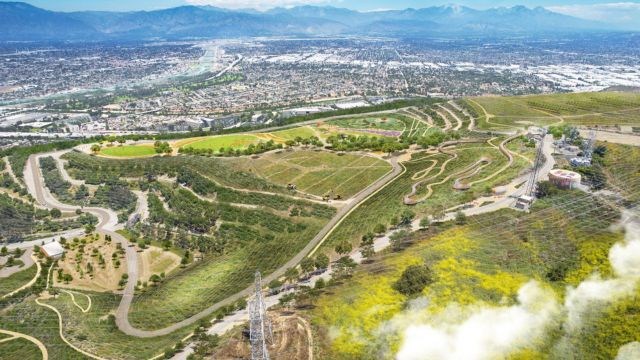Growing into a big new park is California’s largest landfill
A 500-foot-tall mound of trash from Los Angeles had accumulated at the Puente Hills Landfill by the time it closed in 2013.
It resembles a massive mountain. The California Wildlife Conservation Board’s executive director, Jennifer Norris, stated, “It doesn’t even look like it could be human-made.”
It was among the biggest landfills in the world as well as the largest in California. However, it is currently undergoing development into a 142-acre park in Los Angeles, offering far-off vistas of the city skyline and, on a clear day, the Pacific Ocean.
The California Department of Fish and Wildlife said earlier this week that it has granted Los Angeles County Parks and Recreation a $12.5 million grant to assist in converting the dump into the Puente Hills Landfill Park, more than ten years after the landfill was closed. $200 million is the estimated cost of the project. Although Los Angeles County Sanitation Districts is giving $80 million, more money is still needed for the project in order to reach the county’s target.
Puente Hills Landfill Park is the county’s first regional park in thirty years, according to Chester Kano, chief of development for Los Angeles County Parks and Recreation. It has grown to be a significant endeavor. According to Kano, a park is not considered a regional park until it serves several villages at a distance of more than 25 miles.
In an interview with SFGATE, Kano stated, “This is our largest and most important project here at LA County Parks.”
By the fall of 2026, the county intends to have finished the park’s initial phase. A small auditorium, community rooms, an exhibit area that explains the landfill’s history, and an environmental justice center are all included in the designs. There will be a park and picnic area all around the building.
The 40 acres of parkland that remain will be returned to their original state of grass, sage, and oak by the California Wildlife Conservation Board. The park was once a landfill. According to Norris, the region has “the potential to be high-value habitat again.”
The topography created by humans at the dump will also be utilized in the county’s plans.
“It had some really unique views because it was a canyon that was turned into a mountain during this process of filling it with trash,” Kano explained.
According to Kano, on a clear day, guests will be able to view “the shimmer of water over into the ocean beyond” in addition to the towers of downtown Los Angeles and beyond the San Gabriel Valley. (News Source)

